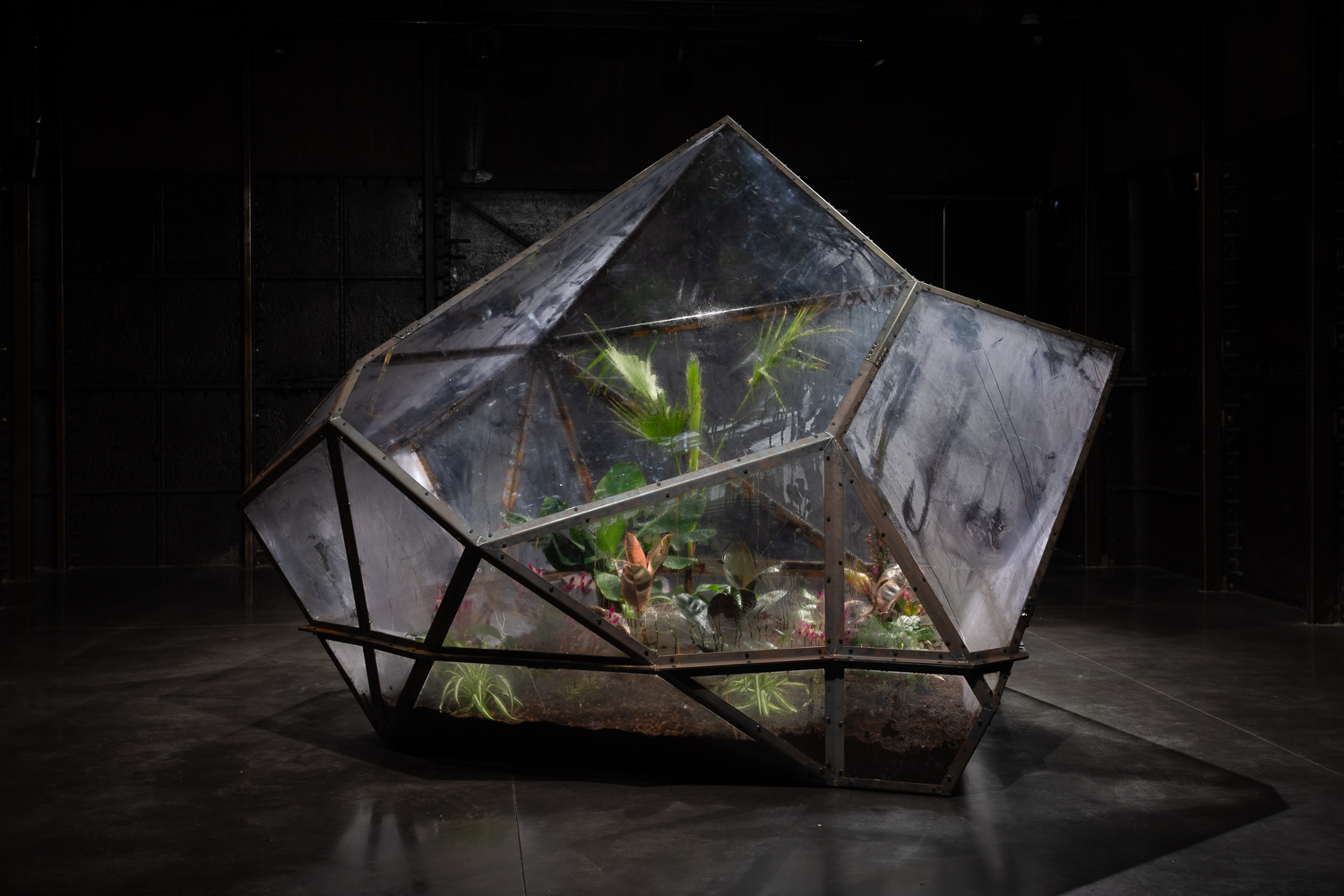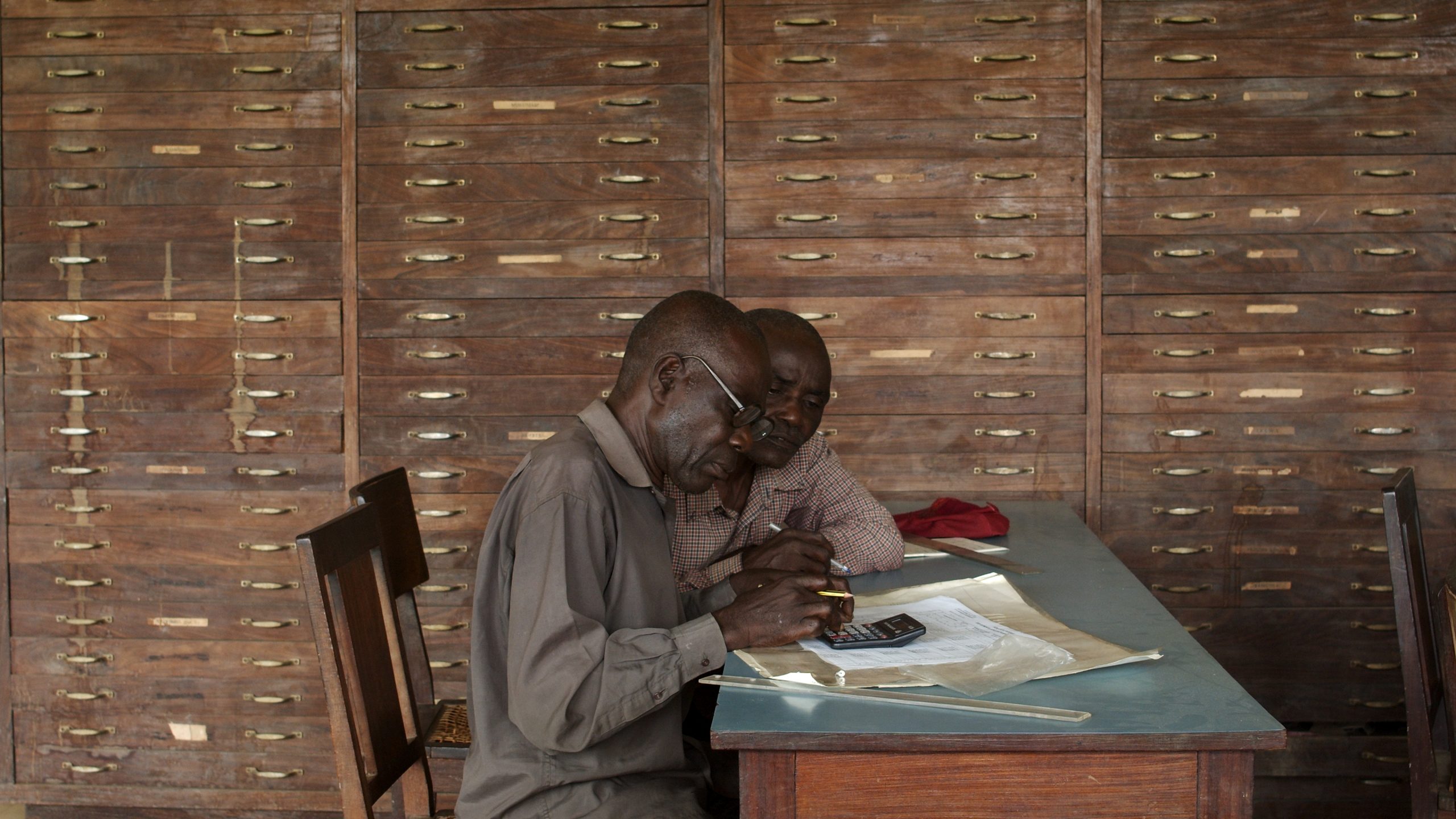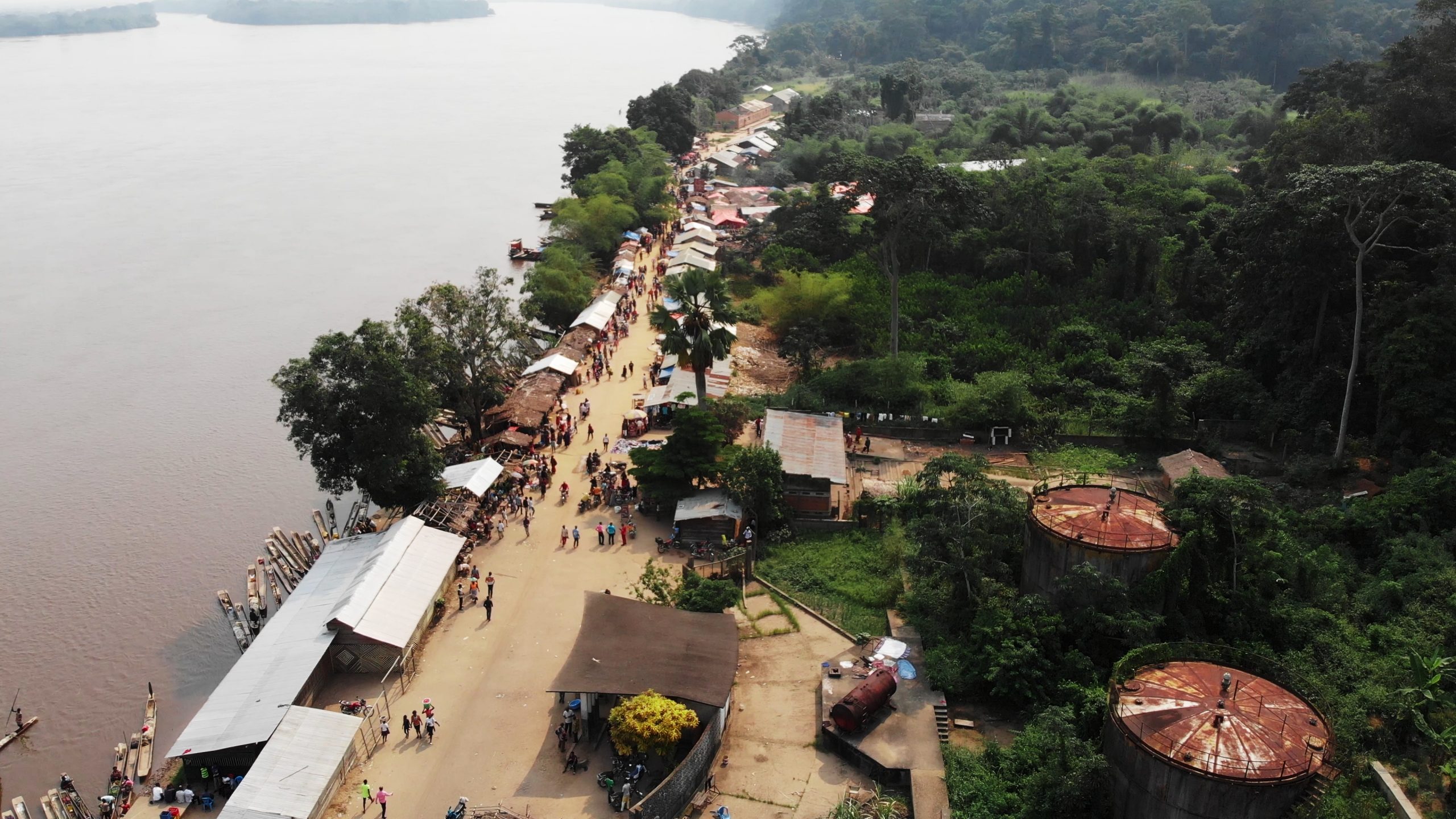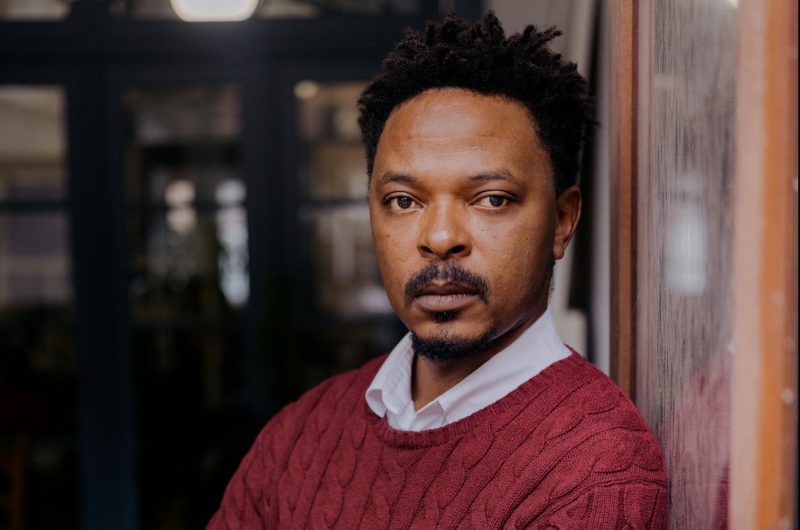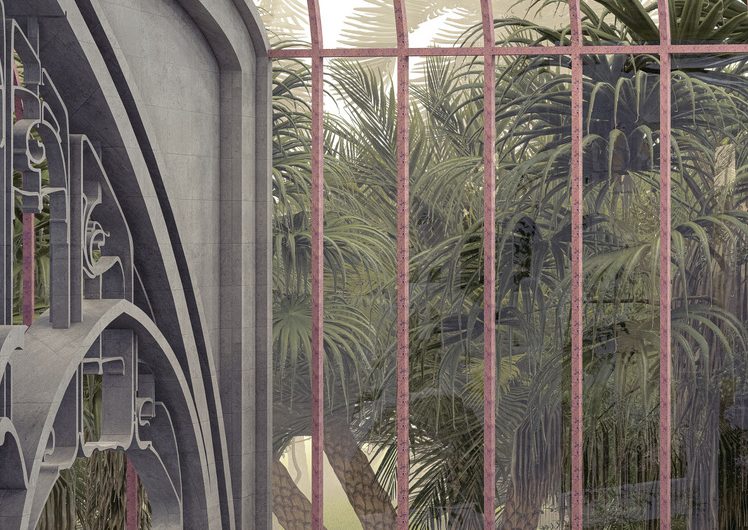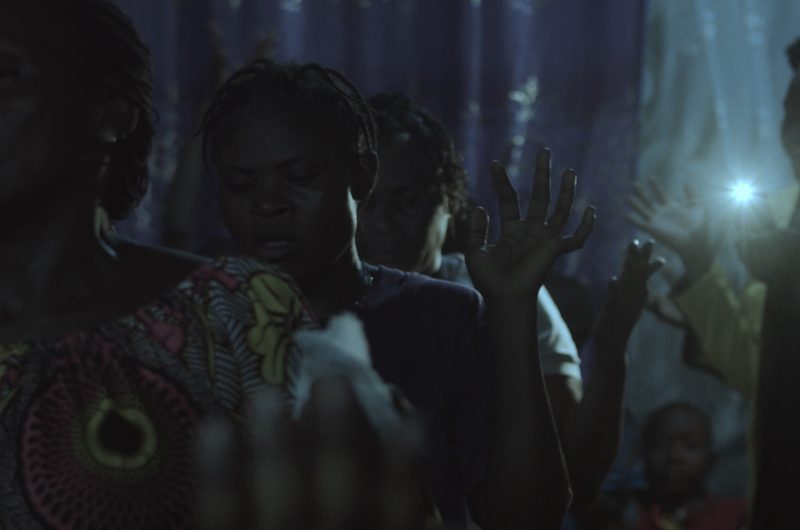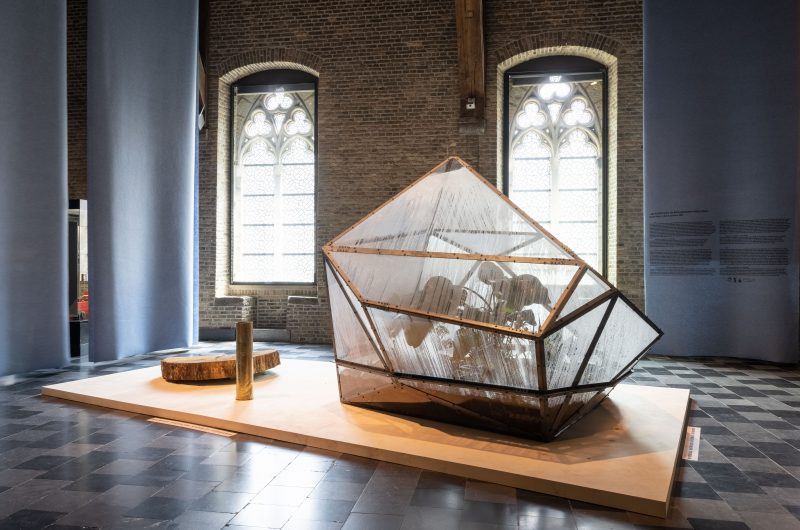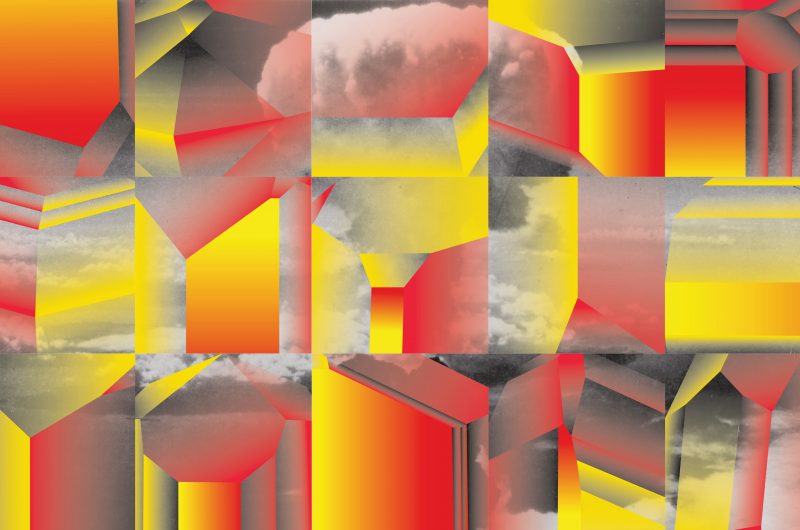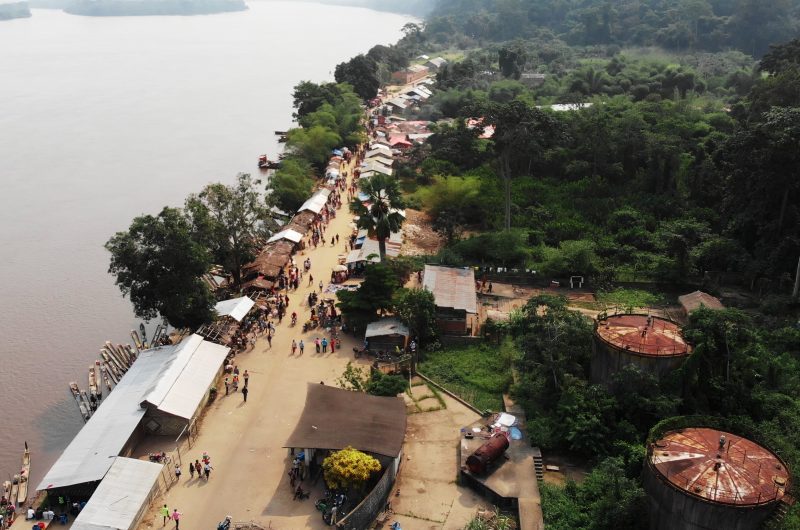SAMMY BALOJI
Goldsmiths CCA presents a solo exhibition by Sammy Baloji (b.1978, Lubumbashi). Comprising two new commissions and important recent works, all of which will be on display in the UK for the first time, this major exhibition presents interconnected strands of Baloji’s artistic research on climate, tropical architecture, Belgian Art Nouveau, and extraction from the Democratic Republic of Congo.
Baloji’s 2023 film, Aequare. The Future that Never Was, focusses on the rainforest around the town of Yangambi and illuminates the legacy of colonialism and the ecological destruction it has caused. The tropical rainforest region in the Congo is the second largest in the world and has a central role to play in the regeneration of the planet’s atmosphere. However, Baloji’s film shows that, as Sandrine Colard has argued, these possibilities are impeded by ‘the disequilibrium caused by old imperial networks and their vestiges.’ The juxtaposition of different types of footage – archival film clips of a climate study centre from the colonial period and recent shots of its contemporary successor – and intricate work on the soundtrack combine to offer a powerful critique of science’s allegiance to capitalism and colonialism.
This important intervention will be shown on Goldsmiths CCA’s first floor, alongside works in other galleries, such as …and to those North Sea waves whispering sunken stories (II), an installation comprising a terrarium containing tropical plants and an audio recording of Albert Kudjabo (1896 – 1934), a Congolese soldier who fought for the Belgian Army during the First World War and was captured and interrogated by the German Army. Finally, a newly commissioned work will consider the connections between extraction and Belgian Art Nouveau, an art movement that, at the time of its emergence, was known as ‘Style Congo’ and utilized both Congolese motifs and materials.
The film and print-based works selected for the basement galleries are key examples of Baloji’s ongoing research on the cultural, architectural and industrial heritage of the Katanga region. Shinkolobwe’s abstraction (2022), a work comprising 15 screenprints, recomposes the crystallographic geologic studies of the region into coloured abstracted forms and superimposes them on top of images of a nuclear explosion. In so doing, the work addresses the period in which the major Cold War powers, the Soviet Union and the United States, wanted to gain access to uranium, of which Shinkolobwe mine was the largest resource in the world. Tales of the Copper Cross Garden (2017), a 43 minute video, reveals how colonialism and the Catholic Church are, in the artist’s own words, ‘linked in their impositions to the local Katanga culture.’ ‘For me,’ Baloji said, ‘nothing less than the copper crosses held in front of the hearts of the choir children suggest how the missionaries tried to steal their souls while exploiting the local copper resource for the benefit of Europeans.’
SUPPORTED BY:
The Sammy Baloji Exhibition Circle: Maria Sukkar, Mercedes Vilardell and those who wish to remain anonymous
BIOGRAPHY:
Read more…
Since 2005, Sammy Baloji has been exploring the memory and history of the Democratic Republic of Congo. His work is ongoing research on the cultural, architectural and industrial heritage of the Katanga region, as well as a questioning of the impact of Belgian colonization. His use of photographic archives allows him to manipulate time and space, comparing ancient colonial narratives with contemporary economic imperialism. His video works, installations and photographic series highlight how identities are shaped, transformed, perverted and reinvented. His critical view of contemporary societies is a warning about how cultural clichés continue to shape collective memories and thus allow social and political power games to continue to dictate human behaviour. As he stated in a recent interview: “I’m not interested in colonialism as nostalgia, or in it as a thing of the past, but in the continuation of that system.”
In September 2019 he commenced a PhD in Artistic Research titled “Contemporary Kasala and Lukasa: towards a Reconfiguration of Identity and Geopolitics” at Sint Lucas, Antwerpen. A Chevalier des Arts et des Lettres, he has received numerous awards, distinctions and fellowships including the Rolex Mentor and Protégé Arts Initiative. In 2019-2020, he was a resident at the Académie de France à Rome – Villa Médicis. Baloji co-founded in 2008 the Rencontres Picha/Biennale de Lubumbashi.
His recent personal exhibitions include K(C)ongo, Fragments of Interlaced Dialogues. Subversive Classifications, Palazzo Pitti, Florence (2022); K(C)ongo, Fragments of Interlaced Dialogues, Beaux Arts de Paris (2021); Sammy Baloji, Other Tales, Lund Konsthall and Aarhus Kunsthal (2020); Congo, Fragments d’une histoire, Le Point du Jour, Cherbourg (2019); A Blueprint for Toads and Snakes, Framer Framed, Amsterdam (2018); Sven Augustijnen & Sammy Baloji, Museumcultuur Strombeek (2018); Urban Now: City Life in Congo, with Filip de Boeck, The Power Plant, Toronto and WIELS, Brussels (2016-2017), and Hunting and Collecting, Mu. ZEE Kunstmuseum aan zee, Ostend (2014). He has recently participated in the 35th Bienal de São Paulo (2023), the Architecture Biennale of Venice (2023), the 15th Sharjah Biennial (2023), the Sydney Biennial (2020), documenta 14 (Kassel/Athens, 2017), the Lyon Biennial (2015), the Venice Biennial (2015), the Photoquai Festival at the Musée du Quai Branly (Paris, 2015).
Read Less...
